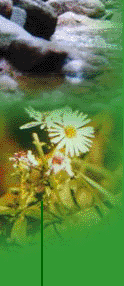Accessory Pigments- groups of pigments that absorb light at wavelengths differently
from chlorophyll such as carotenoids
Antenna complexes- for chemical use, types of carotenoids and chlorophylls that trap and transfer
it into chlorophyll a
Bundle Sheath Cells- in the Calvin Cycle, cells in C4 plants where oxaloacetate
enters and carbon is fixed.
C3 plants- plants that can't proceed in photorespiration that has a 3-C compound
C4 plants- plants that don't lose energy from photorespiration and has a
4-C compound
Calvin Cycle- metabolic pathways that use ATP to fcolvalently bind carbon into
glucose which takes place in the stroma also know as the dark reactions
CAM- a type of C4 palnt that made of succulents
Chlorophylls- green pigments found in chloroplast that gives plants their green color
Cyclic photophosphorylation- only producing ATP, energy that harvest by photosystem 2 only
Mesophyll Cells- photosythetic cell in C4 plants that fix carbon
to oxaloacetate
Photophosphorylation- two pathways that harvest light and produce reduced products taken place
in the thylakoids where Atp is produced
Photorespiration- lost of carbon dioxide without produced oxygen leading to photosynthetic
efficiency under high temp. and low CO2 levels
Photosystem 1 and 2- a series of redox reactions which use electrons to produce NADPH and
use chlorophyll a in Photosystem 1 and ATP and use chlorophyll b in Photsystem 2
Pigments- a substance or material that absorbs light and gives another substance or material
its color
Reaction Center- where molecules are converted from light energy to chemical energy
Rubisco- most important enzyme on Earth
RuBP- during the Calvin Cycle, the CO2 aceptor which combines RuBP and CO2 to produce
3PG also known as ribulose biphosphate
Stomata- one of the many openings in a leap or a stem of a plant that regulates the
exchange of gases in the leaf
3PG- 3-phosophoglycerate which is the first product of carbon fixtaion




